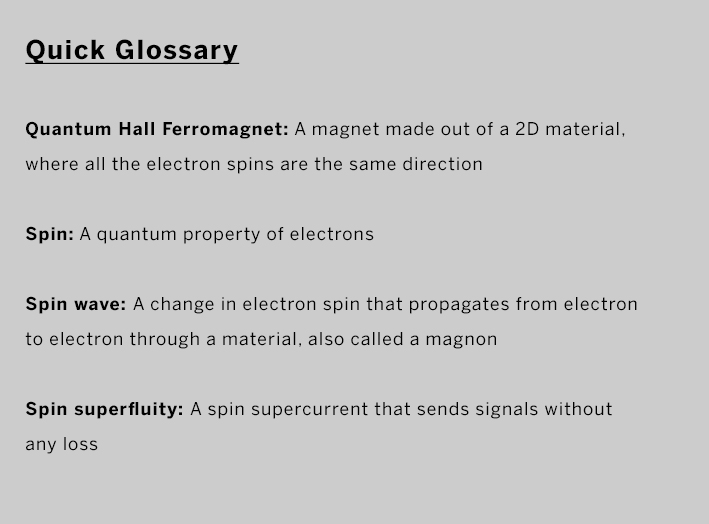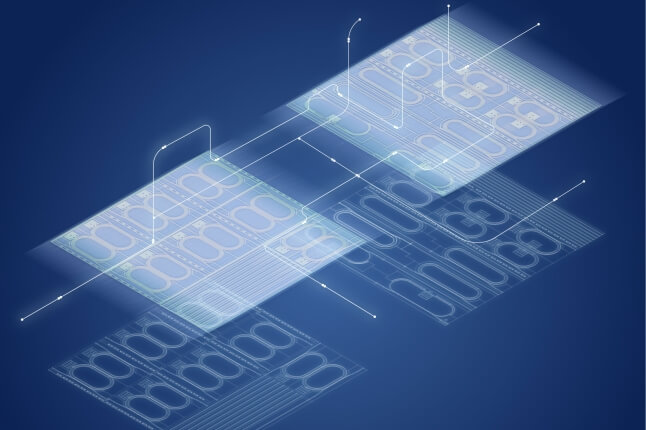News
Researchers excited and detected spin waves in a quantum Hall ferromagnet, spending them through the insulating material like waves in a pond. (Image courtesy of Second Bay Studios/Harvard SEAS)
Quantum Hall ferromagnets are among the purest magnets in the world — and one of the most difficult to study. These 2D magnets can only be made in temperatures less than a degree above absolute zero and in high magnetic fields, about the scale of an MRI.
But quantum Hall ferromagnets could potentially do some really cool stuff, such as host spin superfluity, which, like superconductivity, allows signals to be sent with no energy loss.
In a recently published paper in Science, researchers at the Harvard John A. Paulson School of Engineering and Applied Sciences (SEAS), were able to both excite and detect spin waves in a quantum Hall ferromagnet, demonstrating a new platform to investigate some of the possibilities of this promising material.
“Although the quantum Hall ferromagnets have been studied for nearly 40 years, these magnetic excitations have so far been inaccessible using traditional measurement schemes,” said Amir Yacoby, Professor of Physics and of Applied Physics at SEAS and senior author of the paper.

Yacoby and his team used graphene as their quantum Hall ferromagnet. To excite a spin wave, the researchers converted an electrical signal into a spin signal by creating a voltage differential between two edges in the graphene. Electrons in the “hot edge” (the edge with higher voltage) want to move to the “cold edge” (the edge with lower voltage) but to do so, they need to flip their spin.
“When the electrons flip their spin they give off a kind of momentum, called spin angular momentum,” said Di Wei, a graduate student in the Yacoby Lab and first author of the paper. “That momentum has to go somewhere, and it happens that the ferromagnet is there to absorb it.”
That momentum is like a pebble dropped into a pond: It kicks off a spin-wave, which propagates like a quantum game of telephone, each electron standing still and communicating spin to its coupled neighbor.
When the wave reaches the other side, it crashes into the electrons on the edge, transferring its momentum to them and causing the electrons to flip their spin. When the electron spin flips, the electrons move to different areas on the edge, which is then detected as an electrical signal by the researchers. This combination of spin with electronics could have an important impact on a range of applications, including smaller, faster, and more efficient computers.
“Previous research demonstrated something similar, in terms of using an electrical signal to generate a spin wave, but this is the first time that phenomenon has been shown in a 2D system tuned to the quantum Hall regime,” said Wei. “This system also allows us to study exciting aspects of spin waves, potentially even spin superfluidity.”
This paper was co-authored by Toeno van der Sar, Seung Hwan Lee, Kenji Watanabe, Takashi Taniguchi and Bertrand I. Halperin. It was funded in part by the Gordon and Betty Moore Foundation’s EPiQS Initiative, the US Department of Energy, and the National Science Foundation.
Topics: Applied Physics
Cutting-edge science delivered direct to your inbox.
Join the Harvard SEAS mailing list.
Press Contact
Leah Burrows | 617-496-1351 | lburrows@seas.harvard.edu



